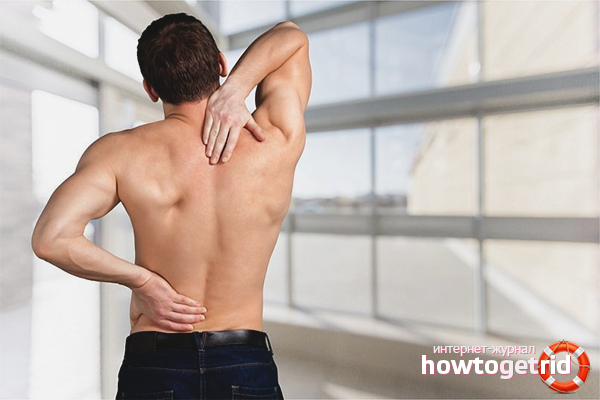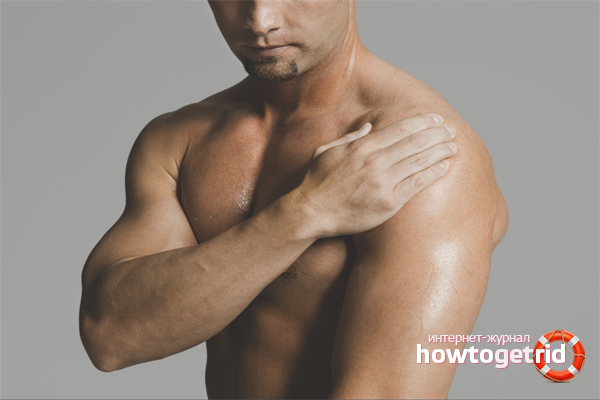The content of the article
It often happens that after a good workout, muscle pain is a concern. It can be very light, can be pleasant, and can cause severe discomfort during movement or even disturb at rest. Muscle pain is an occasion to reflect on its appearance and possible consequences if it is ignored.
Is muscle pain good or bad? To answer this question, you need to learn how to determine the types of muscle pain and the reasons that cause it, as well as know how to get rid of it. This article will answer questions and dot the i.
Why does muscle pain appear after training
Despite the availability of extensive scientific knowledge in the field of medicine, muscle pain after exercise is a topic that raises many questions to this day. Some people think that muscle pain is an indicator of a good and productive workout that your body has “digested”. Others argue that muscle pain is an occasion to reflect and review their workouts. One way or another, there are two types of muscle pain.
During the training process, muscle fibers are subject to physical exertion. As a result of great physical exertion, microdamages are formed on the muscle fibers. Sometimes they are called microtrauma. With the destruction of muscle tissue, the body will intensively secrete lysosomes and phagocytes. They digest injured muscle fibers. Thus, the formation of new protein molecules appears, which play the role of builders of new muscle tissue.
There is also a second opinion about the appearance of muscle pain. Muscle pain occurs as a result of the breakdown of ATB (adenosine triphosphoric acid).
ATV is a molecule that provides energy to all processes that occur in the body. During an intense load on skeletal muscle, lactic acid is released. It increases the level of acidity in the muscles. It helps to slow the transmission of nerve signals and causes a burning sensation in the muscles with tension or movement.
Regardless of the odds, it’s not so difficult to predict the appearance of muscle pain.
After a long break in sports, when performing new exercises, when lifting large weights, with prolonged training, the next 1-3 days will be accompanied by muscle pain.
Professional athletes can reach a level at which they do not feel muscle pain at all. This is due to an increase in the energy potential of muscle groups and adaptation to bulk physical activity.
What types of muscle pain exist
To prevent the appearance of muscle pain after training, it is not enough to know the causes of its occurrence. You need to know what muscle pains are and what causes them.
Pleasant muscle pain
The manifestation of moderate muscle pain: a feeling of clogging, weak muscle tone, ductility during any action.
The pain is mild, pleasant. Pain occurs when the muscle fibers are completely stretched or contracted.
Moderate muscle pain lasts from 2 to 3 days and is considered a good sign, which means the growth and generation of new fibers.
Delayed muscle pain
If such muscle pain disturbs for a long time and does not allow you to exercise normally, then this is a sign of overload. Due to the large amount of physical activity, an unprepared body does not have time to recover. Overtraining occurs.
Overtraining is a process in which there is a halt in progress in physical development, an increase in muscle volume and strength indicators. Cardiac and nervous systems are exposed to high load. It appears when the amount of physical activity exceeds the body's restorative abilities.
Muscle pain caused by trauma
Pain caused by trauma is characterized as a sharp and severe pain that occurs during exercise or the next day. It is accompanied by the inability to perform any action. Most often, injuries occur when a poor-quality warm-up, when working with maximum weights, with insufficient levels of vitamins and minerals in the body.
If you are concerned about pain in the joints or ligaments, you must immediately stop training and consult a doctor.
Burning in the muscles during the final part of the exercises
Such muscle pain occurs due to muscle oxidation that occurs when lactic acid is excreted. You should not be afraid of such pain. So the body is protected from possible overload. Lactic acid is removed from the body within 60-90 minutes.
Is muscle pain an indicator of their growth
Muscle pain after exercise is not a direct sign of muscle growth. However, muscle pain means that the muscle tissue has undergone stress and received micro-tears, therefore, the process of restoration and generation of new tissues is ongoing. But this does not mean that the process of generation and restoration of muscle tissue is always accompanied by muscle pain.
How to prevent muscle pain
It is impossible to completely get rid of muscle pain and forget it forever. But you can make it so that muscle pain is pleasant and beneficial, and also bothers much less.
Gradual increase in weights and training volumes
The number of workouts should be such that each workout is desired. This means that the body is fully restored and ready for a new portion of the load. When there is no mood to train, and the usual weights are given with great difficulty - this means that the body is exhausted and has not recovered from the last workout. In this case, it is necessary to increase the rest time or conduct a light, restorative training.
The same is worth doing with the scales. It is necessary to gradually and smoothly increase the weight. With this approach, all ligaments and joints will get used to heavier weights, and the muscles will adapt to a new, larger load.
The right exercise technique
The correct execution technique will save you from unwanted injuries and ensure steady progress in physical development.
Warm up
Warm up is the most important part of the training process. It allows you to warm up muscles, joints, ligaments and prepare the body for the upcoming physical activity. A quality workout is the key to a good and productive workout.
Also, special attention must be paid to warm-up approaches.
Extra rest
If there is no mood, getting up in the mornings is difficult, and insomnia suffers at night. If there is a blockage on the robot, but there is no desire to go to training, then it is worth considering. Most likely - this is a sign of overwork. In such cases, you need to free yourself from all affairs and relax a couple of days.
Plenty of water
Water increases the efficiency of the body at times. It dilutes blood and speeds up the delivery of nutrients.
Full rest
8 hours of sleep per day. Already all and sundry say about it. But for some reason, not everyone is talking about the value of sleep.
What is the value of sleep?
- The value of sleep is the quality of sleep at a particular hour of the day.
- The value of sleep from the 19th to the 20th hour is 7 hours.
- The value of sleep from 5 to 6 in the morning is just a few minutes.
If a person goes to bed at 22:00 and gets up at 5 in the morning, and also does this all the time, he will fully recover, will always be full of strength and in a good mood. At the same time, he will spend only 1/3 of the day on sleep.
If he goes to bed every time in the dead of night and sleeps until 13-16 hours of the day, then the body will not have time to fully recover, and the rest of the day will be followed by headache and drowsiness. And this despite the fact that he will spend as much as 12 hours sleeping!
Fact: Scientists have proven that if a person goes to bed regularly at 19 p.m. and wakes up at 2 in the night, he will completely rest during this period of time.
However, the modern way of life of an average person does not allow him to adhere to such a routine, therefore it is enough to go to bed no later than 23 hours and sleep at least 7-8 hours a day.
How to get rid of muscle pain
- Massage. Massage accelerates blood circulation, therefore, metabolism increases. The recovery process is faster, and the pain disappears much earlier.
- Recovery Cross. Conducting gentle cardio training implies easy, long-term cross-training. For example, cross 8-10 kilometers at a rate of 5: 30-6 minutes per kilometer. Such a cross accelerates the processes of recovery of the body, increases the overall stamina of the body.
- Hitch. Hitch is a process similar to a warm-up, only performed at the end of a workout. Particular attention should be paid to muscle stretching. This improves their elasticity and speeds up the recovery process, soothes the excited central nervous system and normalizes heart rate (heart rate). Most importantly, a hitch eliminates possible muscle pain.
- Nutrition after exercise. During classes, the body spends a lot of vitamins, electrolytes and glycogen. To start the process of restoration of the body, it is necessary to provide the necessary amount of nutrients.
- Long rest. It is not always possible to have a good rest. Therefore, every 3 months it is necessary to arrange an extended rest, lasting about a week. Such leave will ensure complete recovery of the body and protect against overtraining.
- Bath procedures. Bath, pool and sauna improve blood circulation in the body and accelerate the recovery process.
Using the information obtained after reading this article, you can easily distinguish between good and bad muscle pain. Applying tips to prevent and get rid of muscle pain after training, you can save yourself from injuries, overtraining and other undesirable moments.
Video: muscle sore after training - why and what to do











Submit